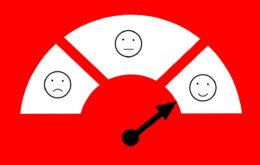Ah, performance appraisals. Some people hate them and the rest hate them too. As a result, many organizations are questioning the need for performance appraisals and others have stopped doing them altogether.
When done properly as part of an overall performance management program, appraisals are an opportunity to reward top performers, help redirect and develop those who need to improve, and overall have a positive impact on the productivity of the organization. However, performance appraisals done poorly have the exact opposite effect. Therefore, if you’re making any of the mistakes below, you should take steps quickly to change these negative performance appraisal activities.
1. You’ve turned “appraisal” into a dirty word.
You sarcastically announce, “Guess what guys, it’s time for annual performance appraisals,” and your employees let out a collective groan. It’s obvious the word “appraisal” has been turned into a dirty one in your organization. Appraisals aren’t something that should be dreaded by you or your employees. They should be presented and conducted positively! When done right, they’re an opportunity to set goals, talk about accomplishments, and help remove obstacles that are keeping employees from moving forward. Change your attitude about appraisals and present them to your employees as the positive opportunity they should be.
 2. Your appraisal tool is not aligned with the employee’s actual duties.
2. Your appraisal tool is not aligned with the employee’s actual duties.
It’s hard to evaluate someone’s work when you’re using a tool that doesn’t assess what they actually do on a daily basis at work. If your evaluation tools are outdated, it’s time to review and change them. Ensure the tool is aligned with your organizations mission and goals as well as the specific job responsibilities for each position in your organization.
3. You give all employees the same rating.
Nobody’s perfect, so you can’t give people an “exceeds” rating and you don’t want to be too negative, so you can’t use “does not meet”. Therefore, everyone ends up in the middle. So when it comes time to promote someone, how do you know who is the best person for the job? It’s important to evaluate employees accurately and fairly. If everyone truly just “meets” standards, then fine. However, you’re doing a disservice to top performers and those who aren’t meeting standards by not telling the truth. If you’re doing a good job of keeping concrete proof of performance throughout the year AND you’ve created standards for what constitutes “does not meet”, “meets”, and “exceeds”, then establishing the correct rating for each employee should be fairly obvious.
4. You have quotas for ratings.
Many organizations impose quotas on managers for the number of “exceeds” and “does not meet” ratings they can give on employee performance appraisals. Some of these quotas are in place because of the mistaken belief that employee performance in an organization falls in a normal distribution (bell curve), which recent research has proven to be inaccurate in about 94 percent of cases. In other instances, quotas are in place for “exceeds” ratings because appraisal results are tied to compensation and organizations limit the number of people who can receive the highest raises. Therefore, a manager can only reward one or two top performers with the highest ratings. It’s time to get rid of the quotas and evaluate employees fairly.
 5. You’re uncomfortable “judging” others.
5. You’re uncomfortable “judging” others.
Many managers are uncomfortable being in the position of evaluating people. If you’re one of them, try changing your mindset. Don’t think of performance appraisals as judging others or criticizing them. Instead, think of it as an opportunity to praise employees’ accomplishments and to help them improve performance that is holding them back, causing them stress, or making their jobs more difficult.
6. You rely on memory for evaluation content.
Both you and your employees should be keeping records of performance throughout the year. If you rely on memory, you’ll likely fall prey to the recency effect, which is when you focus too heavily on the most recent events, good or bad, instead of looking at the entire past year as a whole. Relying on memory can also result in a halo or negative halo effect- where your personal feelings about the employee and the good or bad view of their performance clouds the appraisal and doesn’t allow you to get an accurate picture of real performance.
7. You only address performance once a year.
Does it make sense to go 365 days without letting an employee know there’s a problem with his or her performance? Of course not! An annual performance evaluation should be a part of an overall performance management process, not a stand-alone, once-a-year meeting. In my workshop “Coaching Your Employees: The 364 Days Before the Performance Appraisal”, I teach participants the importance of having alignment between the organization’s mission and vision, organizational and individual employee goals, setting clear expectations, and coaching and feedback throughout the year, as part of the performance management process. It’s important that managers have both formal and informal performance discussions throughout the year to address successes and concerns.
These are just some of the most common reasons performance appraisals aren’t working. What would you add to this list? Comment and let us know!







